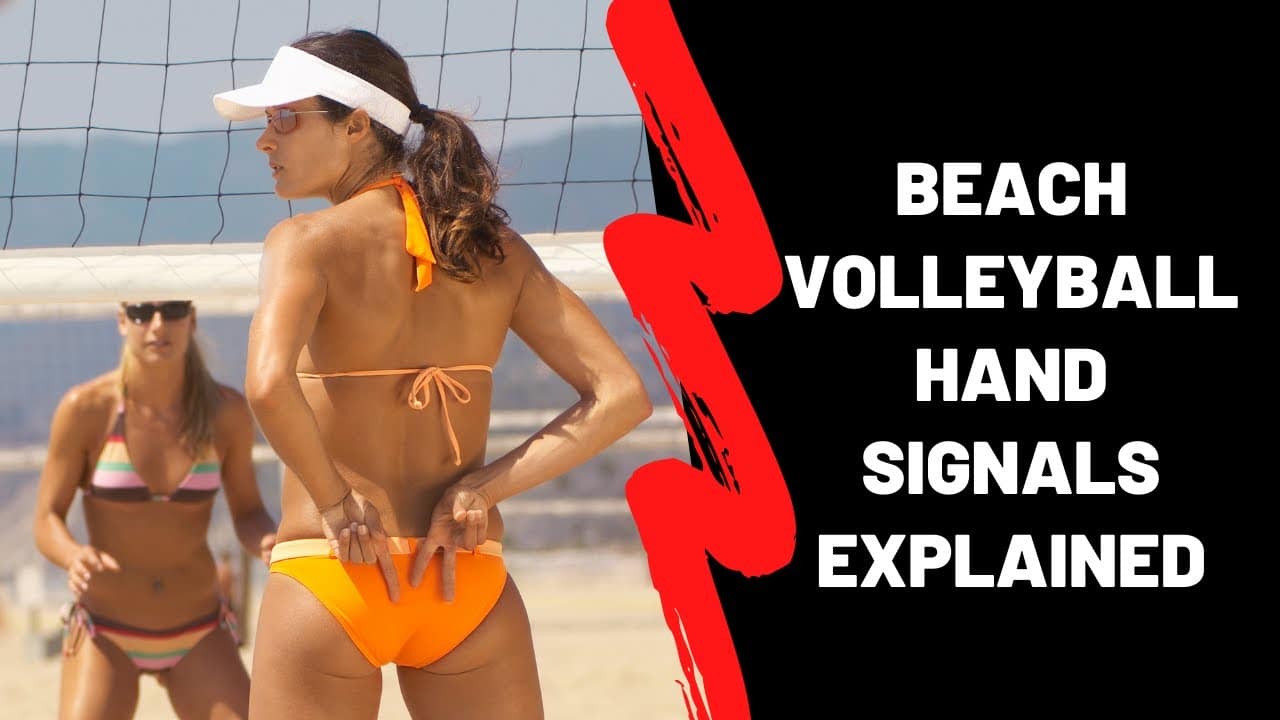Welcome back, volleyball enthusiasts! I’m Sarah Pavin, an Olympian, Beach Volleyball World Champion, and seasoned indoor volleyball professional.
Today, we’re unraveling the mystery behind those intriguing signals you witness in beach volleyball.
Ever wondered why players give each other signals behind their backs?
How To Do A Beach Volleyball Pokey
How to Jump Serve in Volleyball
Let’s delve into the basics of the “one” and “two” symbols, ensuring you’re in the know during your next beach volleyball match or viewing experience.
1. Purpose of Signals:
But first, let’s clarify the purpose of these signals. Whether given by the blocker at the net or the player in the backcourt, these symbols communicate the blocking strategy. They tell the partner what the blocker intends to take away, allowing the defender to adjust their positioning accordingly. So, what do these symbols mean, and how do they impact the game?
2. Understanding the Symbols:
One Symbol:
- Representation: Left hand behind the back (from the player’s perspective).
- Meaning: The blocker is committed to blocking the hard swing straight down the line.
- Defender’s Role: Defending against hard-angle swings, cutting shots, and chasing high shots over the blocker’s head.
Two Symbol:
- Representation: Right hand behind the back (from the player’s perspective).
- Meaning: The blocker is focused on blocking the hard swing in the angle.
- Defender’s Role: Defending against hard swings down the line and covering cut shots, reacting to the hitter’s actions.
3. Visual Representation:
To make this clearer, I’ve created a visual representation on my trusty board:
- One Symbol (Line Block): The blocker aligns directly in front of the hitter, taking away the line shot. The defender is responsible for angle hits and high shots over the blocker’s hands.
- Two Symbol (Angle Block): The blocker positions themselves more inside, focusing on the angle shot. The defender covers the hard hits down the line and adjusts for cut shots, also reacting to any potential high shots.
4. Priority for Defender:
Understanding the priority for the defender based on the blocking call is crucial:
- One Call: Priority is angle defense; then, it’s defense against cut shots, and finally, defending high shots down the line.
- Two Call: Priority shifts to defending hard hits down the line, followed by cut shots, and lastly, angle shots.
Conclusion:
Now armed with this knowledge, you can decipher the signals and comprehend the strategic moves on the beach volleyball court. As you progress in the sport, you’ll encounter more advanced strategies, but mastering the “one” and “two” symbols is a foundational step.
If you found this information valuable, drop your questions in the comments below. Don’t forget to like this video, subscribe to the channel, and stay tuned for more captivating volleyball content. Thanks for joining in, and may your beach volleyball experiences be filled with strategic brilliance!
